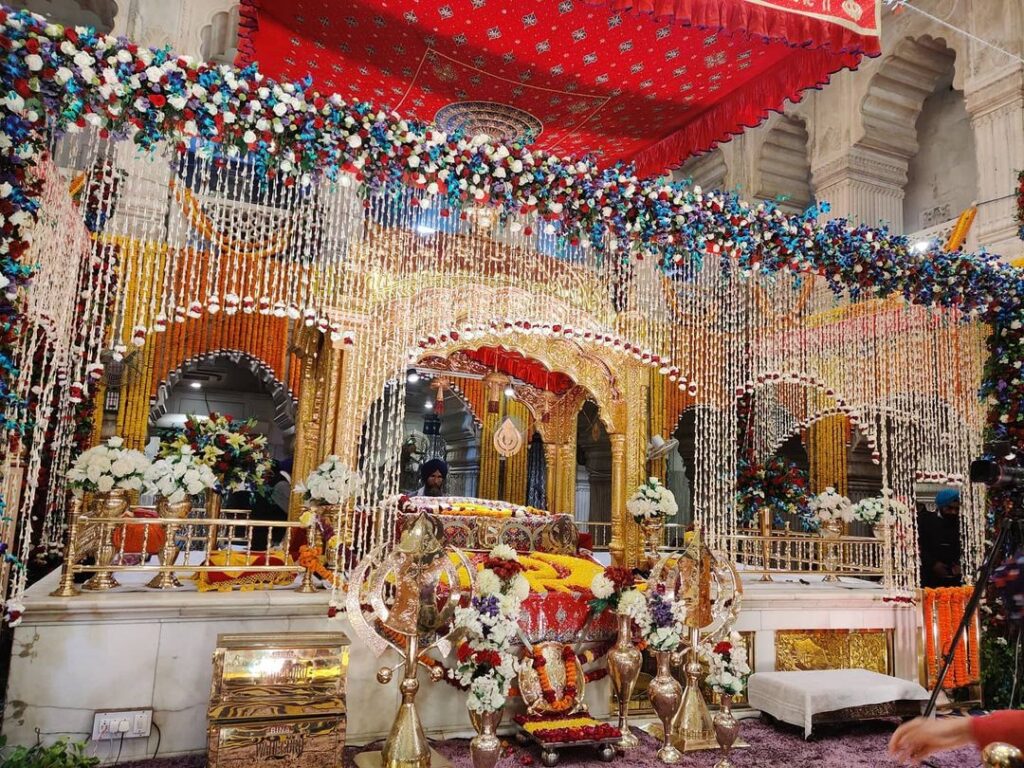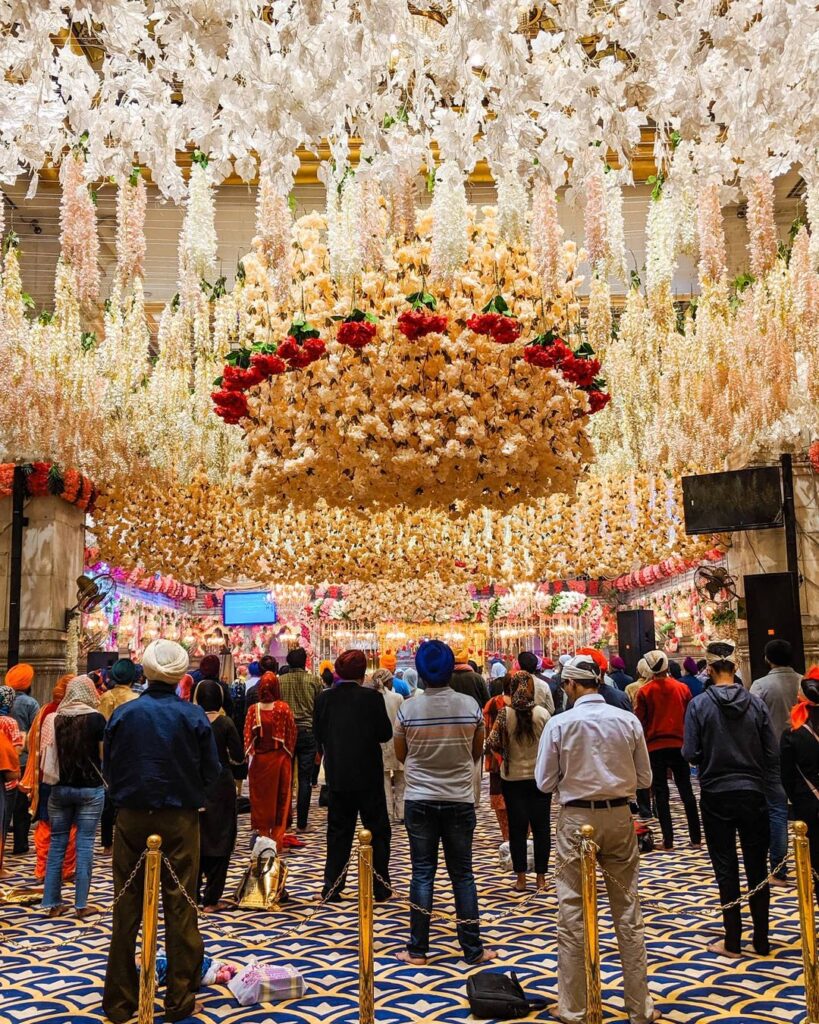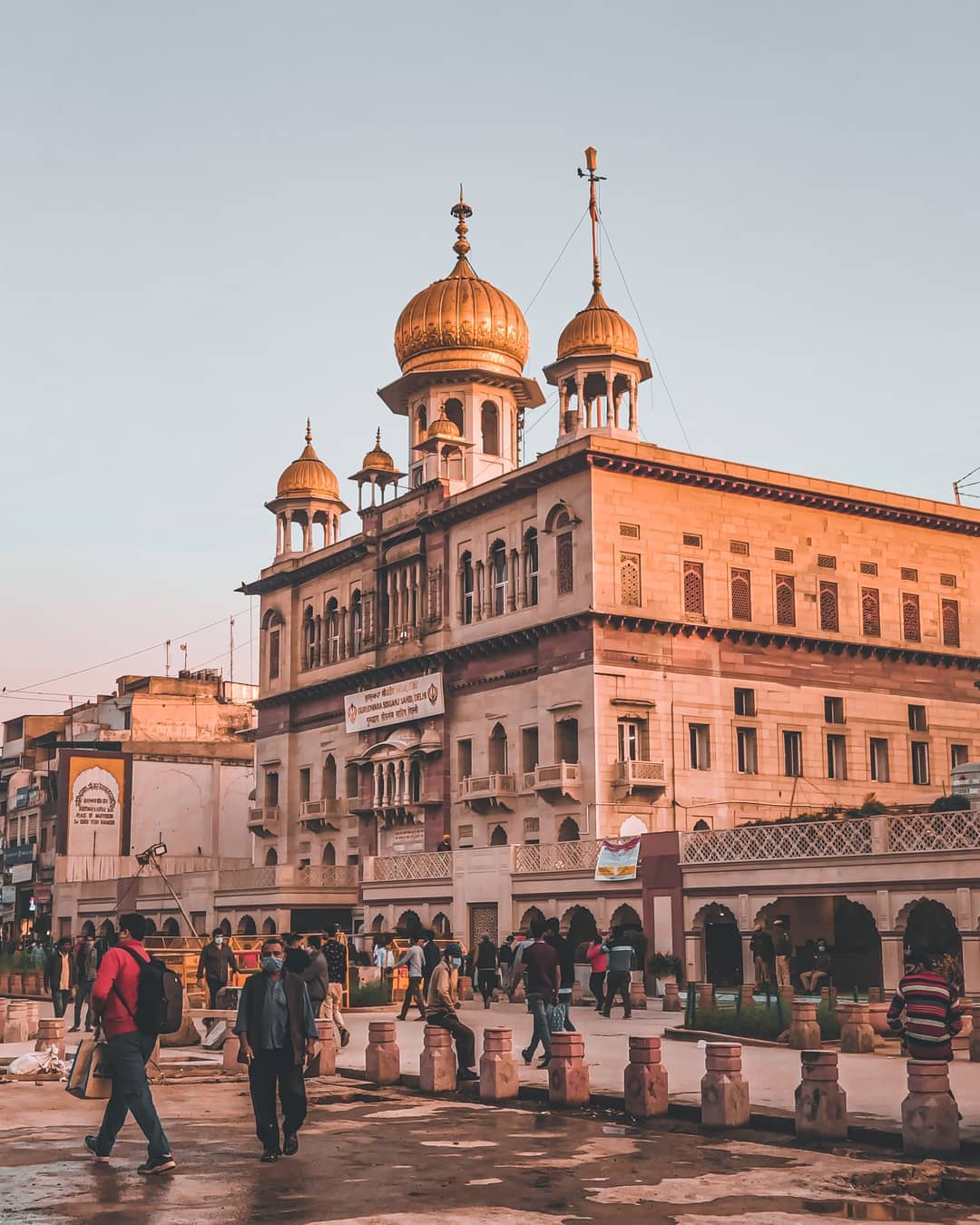Gurudwara Shri Sisganj Sahib stands tall and glorious on Chandni Chowk road, and without a doubt compliments the old-world charm of the latter. Constructed in 1783 by Baghel Singh Dhaliwal, the Gurudwara stands at the spot of the martyrdom of Guru Tegh Bahadur, next to the police station where the Guru was imprisoned and his disciples tortured. It was built in Mughal style of architecture and has served as both a mosque and a gurudwara due to changing political climate. In 1930, the British Raj ruled in the favor of the Sikh litigants and the golden domes were added to it. Many might also know of the relics from the Guru’s life such as the well from which he drank water and the trunk of the banyan tree under which he was beheaded, that are part of the enclosure. But not many know of the history of the happenings that lent this Gurudwara eternal importance in Sikh religion and beyond.

After killing his brother Dara Shikoh, Aurangzeb came into power in 1658. With an ambition to convert India into an Islamic theocracy, he decided to begin with the conversion of Kashmiri Pandits. Desperate to avoid this dreadful fate, Pandit Kirpa Ram approached Guru Tegh Bahadur at Anandpur and sought help. The Guru, in response, asked him to tell Aurangzeb that the entire community would convert if only he can make him (the Guru) abandon his faith.
Enraged by this, Aurangzeb imprisoned Guru Tegh Bahadur in a Kotwali at the site of today’s Sisganj Sahib. In the hope to arouse a desperate submission by the Guru, his companions Bhai Sati Das, Bhai Mati and Bhai Dayal Das were tortured and executed in front of his eyes. He watched calmly and continued to defy conversion. Following this, he was beheaded under a banyan tree. Aurangzeb, however, did keep his word and did not carry out the forceful conversion of Hindus after his execution.

The following night, under the cover of darkness, Bhai Jaita was able to flee with the Guru’s head to Anandpur, where he cremated it. On the same night, another disciple was able to run away with the Guru’s body and cremate it near Raisina Hills, where Gurudwara Rakabganj stands today.
Guru Tegh Bahadur is also known as ‘Hind ki Chadar’ due to his selfless act of giving up his life for protecting the Hindu religion, a fact very few are familiar with. His 400th anniversary today marks a great occasion for us to remember his sacrifices and learn from his principles of unconditional kindness towards the other.




